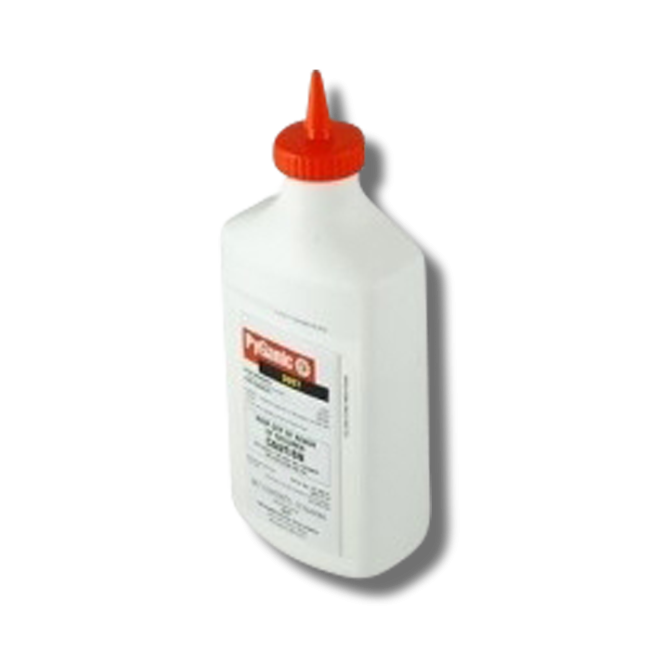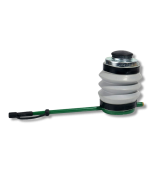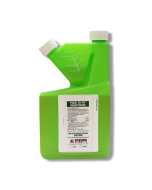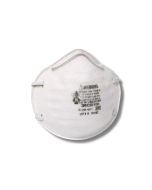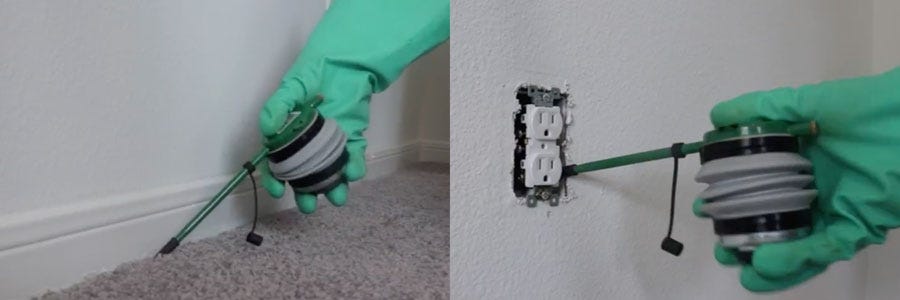Gain access to personalized product screening, the best pricing, rewards, and more!
Pyganic Dust
Pyganic Dust is a pyrethrin-based insecticide used to treat over 230 different common pests. It is a low-odor, fine white dust that is safe to use around the home and delivers a quick kill.
Pyganic Dust, manufactured by MGK, is an easy-to-use insecticide dust that contains silica gel, an environmentally friendly active ingredient. P
This organic dust can be used to treat a wide range of insects. It kills pests via dehydration. It works indoors and outdoors and even as a crack and crevice treatment.
When applied, Pyganic Dust can stay effective for up to a year, eliminating the need for excessive reapplication for complete pest control.
Tools Needed
To make applications, a dust applicator, shaker can, dust gun, puffer duster, bulbous duster, hand pump duster, hand-operated rotary duster, static charge duster, or other appropriate hand-operated duster is needed.
How to Use
- Step 1: Inspect your pest problem and observe where they are active so you know where to focus your treatment. Wait until the food or feed processing facility is not in operation or when food is exposed. In the home, cover all food handling surfaces and cover or remove all food and cooking utensils, or wash thoroughly after treatment. For lawn treatments, make sure to mow 1 to 2 days prior to application. Determine how much Pyganic Dust to use by measuring the square footage of the treatment area. To do this, measure the length and width of the treatment area in feet, then multiply (length X width = square footage). Crack and crevice treatment in food/feed areas of food/feed handling establishments, apply 1.5 oz. of Pyganic Dust per 50 sq. ft. of cracks and crevices. For stored product pests in non-food/non-feed areas and in storage sites, apply 4 to 8 oz. of product per 250 sq. ft. of surface area. For lawns, landscapes, and backyard applications, use 8 to 24 oz. of product per 1,000 sq. ft. For exterior building perimeter treatments, apply 16 to 24 oz. of product per 1,000 sq. ft. in a band extending 12 to 18" along and adjacent to the foundation at a height of 2 to 3 feet upside of the building. For labeled direct domestic animal application, apply 2 oz. of product per animal with a shaker can or suitable mechanical dust applicator over the head, neck, shoulders, back, and legs.
- Step 2: Input the appropriate amount of Pyganic Dust into your selected pesticide duster about halfway and secure the cap to seal.
- Step 3: Apply small puffs of dust to voids, cracks, and crevices around the home where the pests have been active.
- Step 4: Vacuum up the dust and dead insects after treatment.
Where to Use
Pyganic Dust can be used in and around indoor areas: animal areas, animal quarters, apartments, asian markets, attics, bakeries, barns, basements, beef barns, beverage plants, bins, bottling plants, brandy storage warehouses, breweries, brewery warehouse, building housing animals, building housing poultry, cabinets, cafeterias, calving barns, canneries, cat sleeping quarters, cattle barns, certified organic facilities, cheese caves, citrus packing houses, coffee houses, coffee shops, commercial buildings, condominiums, covenience stores, crawl spaces, dairies, dairy and livestock barns, dairy food processing, day care centers, delicatessens, department stores, diners, distilleries, dog houses, dog sleeping quarters, drains, sewers, dried flower warehouses, dried food products in processing, dried food products in storage, dried fruit processing plants, dried fruit warehouses, dumpsters, dwellings, egg processing plants, egg storage facilities, factories, false ceilings, farm structures, feed mills, flour mills, food handling establishments, food preparation facilities, food processing facilities, food quarantine areas, food service facilities, food storage facilities, freight containers, fruit packing sheds, fruit processing plants, fruit quarantine areas, fruit storage warehouses, garbage bins, garbage cans, garbage compacters, garbage trucks, goat holding areas, goat houses, grain elevators, grain handling equipment, grain harvesting equipment, grain mills, grain storage, granaries, greenhouses, grocery stores, hog barns, homes, horse stables, horse barns, horse trailers, hospitals, hotels, houses, indoor eating facilities, industrial installations, industrial plants, institution dining areas, institutions, kennels, liveries, livestock barns, livestock hauling equipment, livestock holding areas, loafing sheds, meat markets, meat packaging plants, meat packing plants, mess halls, milk houses, milk processing facilities, milk rooms, milk sheds, milking rooms, mills, motels, mushroom caves, mushroom processing plants, office buildings, other public buildings, packaged food storage, pantries, peanut processing plants, peanut warehouses, pet bedding, pet carriers, pet food plants, pet sleeping areas, poultry houses, poultry processing plants, rabbit houses, rabbit processing plants, railroad carts, research animal areas, restaurants, rice mills, schools, seed storage, shade houses, sheep holding areas, ship holds, ships, spice markets, stable bins, stables, storage areas, storage bins (areas), storages, stored product areas, stored products, stored seed warehouses, stores, supermarkets, swine houses, taverns, tea houses, textile mills, tobacco factories, tobacco warehouses, tool sheds, trains, transportation equipment (except aircraft), tree nut storage areas, truck trailers, vegetable packing facilities, vegetable processing facilities, vegetable storage facilities, veterinary clinics, veterinary hospitals, voids in attic, wall voids, warehouses, wheat mills, wholesale stores, wine cellars, wine storage warehouses, wine tasting rooms, wineries, and zoos.
In and around outdoor areas: ant mounds, arboretums, back yards, balconies, beneath decks, beneath gazebos, calf hutches, compost sites, courtyards, decks, dog runs, drive-in restaurants, drive-in theaters, dumpsters, farmer markets, flea markets, front yards, gardens, gazebos, home gardens, kennels, lanais, landscapes, lath houses, loading docks, lumber storage areas, nurseries, outdoor eating facilities, patios, porches, sanitary sewers (manholes), side yards, swine yards, and wood piles.
The only domestic animals to be treated are beef cattle, dairy cattle, horses, swine, and poultry.
When to Use
Use Pyganic Dust when you have an insect problem in the home or place of business.
Safety Information
Pyganic Dust is safe to use around children and pets when applied according to the product label instructions. Always wear the appropriate personal protective equipment (PPE) when handling or applying this product.
Keep pets and children out of the treated area until after the dust has settled.
Special Considerations
It is preferred to be used with a hand duster, and power dusters should be avoided with this product.
| Availability | Online |
| Restricted Use | No |
| Shipping Restrictions * = not registered** = restricted use | 10 Ounce: AK*, AL*, AR*, AZ*, CA*, CO*, DC*, DE*, FL*, GA*, HI*, ID*, IL*, IN*, LA*, MA*, MD*, ME*, MI*, MN*, MO*, MS*, MT*, NC*, ND*, NE*, NH*, NJ*, NM*, NV*, NY*, OH*, OK*, OR*, PA*, RI*, SC*, SD*, TN*, TX*, UT*, VA*, VT*, WA*, WI*, WV*, WY* |
| Brand | MGK |
| Keith's Pro Tips | "A great place to apply dust is behind electrical outlets. Unscrew the outlet face plate and apply the dust. One puff should be enough. You will need a hand held duster to distribute the Pyganic Dust. " |
| Product Drawbacks | Loses effectiveness when wet. |
| Target Pests | Adelgids, Alfalfa Weevil, Almond Moth, American Black Flour Beetle, Angoumois Grain Moths, Ants, Aphids, Apple Maggot, Armyworms, Asian Cerambycid Beetles, Asian Lady Beetle, Asian PineTip Moths, Bagworm, Barn Flies, Bat Bugs, Bean Beetles, Bean Weevils, Bed Bugs, Bees, Beet Armyworms, Beetles, Birch Leafminer, Black Carpet Beetles, Black Fungus Beetles, Black Turpentine Beetles, Black Vine Weevil, Blacklegged Tick Nymphs, Blister Beetles, Blow Flies, Booklice, Bottle Flies, Boxelder Bugs, Broadhorned Flour Beetles, Broadnosed Grain Weevils, Brown Spider Beetles, Brown SpruceLonghorn Beetle, Budworms, Bugs, Cadelles, California Oakworm, Cankerworms, Carpet Beetles, Carrion Beetles, Carrot Weevil, Caterpillars, Catorama Beetles, Centipedes, Cereal Beetles, Cheese Mites, Cheese Skippers, Chicken Mites, Chocolate Moths, Chrysanthemum Leaf Miners, Cicadas, Cigarette Beetle, Clearwing Borer, Clothes Moths, Clover Mites, Clover Weevil, Cluster Flies, Cocoa Bean Moths, Coffee Bean Weevils, Cone Beetles, Cone Worms, Confused Flour Beetle, Conifer Spider Mite, Corn Sap Beetles, Cottonwood Borer, Cottonwood Leaf Beetles, Cranbury Girdlers, Crane Flies, Crickets, Cross-striped Cabbageworm, Cucumber Beetles, Cutworms, Dark Mealworms, Darkling Beetles, Deer Tick, Depressed Flour Beetles, Dermestid Beetles, Diamondback Larvae, Dingy Cutworm Adult, Douglas Fir Midge, Douglas Fir Tussock Moth, Drain Flies, Dried Fruit Beetles, Drugstore Beetles, Earwigs, Eastern Tent Caterpillar, Elmleaf Beetle, Emerald Ash Borer, European Grain Moths, European Pine Shoot Moth, European Pine Tip Moth, Face Flies, Fall Cankerworms, Fall Webworm, Fannia Flies, Field Crickets, Firebrats, Fireworms, Flat Grain Beetles, Flea Beetles, Fleas, Flies, Flying Moths, Foreign Grain Beetles, Forest Tent Caterpillar, Fruit Flies, Fruit tree Leafroller, Fungus Beetles, Fungus Gnats, German Cockroaches, Giant Root Aphid, Glassy WingedSharpshooter, Grain Mites, Granary Insects, Granary Weevils, Grape Leafhopper, Grape LeafSkeletonizer, Grasshoppers, Green Fruit Worm, Green Peach Aphid, Greenbugs, Greenhouse Thrips, Ground Beetles, Gypsy Moth, Hairy Fungus Beetles, Hairy Spider Beetles, Harlequin Bug, Heliothis spp., Hessian Fly, Hide Beetles, Hornets, Hornworm, Inchworm, Indian Meal Moth, Iris Borer, Japanese Beetle, Katydids, Khapra Beetles, Lace Bugs, Large Black Flour Beetles, Larger Cabinet Beetles, Larger Grain Borers, Leafhoppers, Leafminers, Leafrollers, Leaftiers, Lesser Grain Borers, Lesser Grain Beetles, Lesser Meal Worm, Lesser PeachTree Borer, Longheaded Flour Beetles, Loopers, Lygus Bugs, Maize Weevils, Mealy Bugs, MediterraneanFlour Moths, MerchantGrain Beetles, MexicanBean Beetle, MexicanGrain Beetles, Millers, Millipedes, Mimosa Webworm, Mole Crickets, Moth Flies, Murmidius Beetles, Mushroom Flies, Nantucket PineTip Moth, Northern Fowl Mites, Onion Maggot, Palmetto Bug, Paper Wasps, Peach Twig Borer, Pear Psylla, Pillbugs, Pine Bark Beetles, Pine Engraver, Pink Scavenger Caterpillars, Pinworms, Plant Bugs, Plum Curculio, Ponderosa Pine Needle Miner, Poultry Lice, Powder Post Beetles, Psocids, Psyllids, Red Flour Beetles, Red Gum Lerp Psyllid, Red Horned Grain Beetles, Red Lily Beetles, Red Oak Borer, Redbanded Leafroller, Rice Flour Beetles, Rice Moths, Rice Weevils, Root Weevils, Rose Chafer, Royal Palm Bugs, Rusty Grain Beetles, Saw Flies, Saw-ToothedGrain Beetle, Scale, Seedbugs, Silverfish, Skipper Flies, Skippers, SlenderhornedFlour Beetles, Small Flying MothsSmall Fruit Flies, SmalleyedFlour Beetles, Southern RedMite, SouthernPine Beetles, Sowbugs, Spider Beetles, Spider Mites, Spruce Mite, SquareneckedGrain Beetles, Stable Flies, Stalk Borers, Stink Bugs, Stored ProductPests, Subtropical PineTip Moth, SycamoreLeaf Beetle, Tarnished Plant Bug, Tent Caterpillar, Thrips, Tobacco Moths, Trogoderma Beetles, Two-BandedBeetles, Vegetable Leaf Miners, Vinegar Flies, Warehouse Beetles, Wasps, Waterbugs, Webworms, Weevils, Western PineTip Moth, White AppleLeafroller, White MarkedSpider Beetles, Whiteflies, Wireworms, Yellow Mealworms, and YellowJackets. |
| Application Equipment | Duster |
| Application Methods | Crack & Crevice, Spot Treatment |
| Active Ingredient | Pyrethrins 1%, and Amorphous Silica Gel 15% |
| Product Type | Insecticide |
| Formulation | Dust |
| Application Rate | Crack and crevice treatment in food/feed areas of food/feed handling establishments, apply 1.5 oz. of Pyganic Dust per 50 sq. ft. of cracks and crevices. For stored product pest in non-food/non-feed areas and in storage sites, apply 16 to 24 oz. of product per 1,000 sq. ft. of surface areas. For stored product pest in non-food/non-feed areas and in storage sites, apply 4 to 8 oz. of product per 250 sq. ft. of surface area. Crack and crevice treatment of stored product pest in non-food/non-feed areas, apply 1 oz. of product per 50 sq. ft. of surface area into cracks and crevices. Indoor treatments of bed bugs, apply as spot treatment at rate of 1.5 oz. of product per 50 sq. ft. of surface area. For severe indoor bed bug infestations, use 16 to 20 oz. of product per 1,000 sq. ft. |
| Shelf Life | Pyganic Dust will last up to 3 years when stored in a cool, dry, well-ventilated (preferably locked) area that is inaccessible to children and animals, and away from food and pet food. |
| Yield | 10 oz. of Pyganic Dust covers up to 500 sq. ft. |
| Use Sites | Indoors, Outdoors |
| Time to Kill | Pyganic Dust removes insects within 10 days of application. |
| Comparable Products | Drione Dust |
| EPA Registration # | 1021-1871 |
| Restricted Use | No |
|---|---|
| Shipping Restrictions | AK, AL, AR, AZ, CA, CO, DC, DE, FL, GA, HI, ID, IL, IN, LA, MA, MD, ME, MI, MN, MO, MS, MT, NC, ND, NE, NH, NJ, NM, NV, NY, OH, OK, OR, PA, RI, SC, SD, TN, TX, UT, VA, VT, WA, WI, WV, WY |
| Availability | Online |
| Signal Word | CAUTION |
| Keith's Pro Tip | "A great place to apply dust is behind electrical outlets. Unscrew the outlet face plate and apply the dust. One puff should be enough. You will need a hand held duster to distribute the Pyganic Dust. " |
| Time to Kill | Pyganic Dust removes insects within 10 days of application. |
| Chemical Type | Insecticide |
| Formulation | Dust |
| Application Methods | Crack & Crevice, Spot Treatment |
| Product Drawbacks | Loses effectiveness when wet. |
| Active Ingredient | Pyrethrins 1%, and Amorphous Silica Gel 15% |
| Application Equipment | Duster |
| Mix Rate | Crack and crevice treatment in food/feed areas of food/feed handling establishments, apply 1.5 oz. of Pyganic Dust per 50 sq. ft. of cracks and crevices. For stored product pest in non-food/non-feed areas and in storage sites, apply 16 to 24 oz. of product per 1,000 sq. ft. of surface areas. For stored product pest in non-food/non-feed areas and in storage sites, apply 4 to 8 oz. of product per 250 sq. ft. of surface area. Crack and crevice treatment of stored product pest in non-food/non-feed areas, apply 1 oz. of product per 50 sq. ft. of surface area into cracks and crevices. Indoor treatments of bed bugs, apply as spot treatment at rate of 1.5 oz. of product per 50 sq. ft. of surface area. For severe indoor bed bug infestations, use 16 to 20 oz. of product per 1,000 sq. ft. |
| Use Sites | Indoors, Outdoors |
| Yield | 10 oz. of Pyganic Dust covers up to 500 sq. ft. |
| EPA Registration No. | 1021-1871 |
| Shelf Life | Pyganic Dust will last up to 3 years when stored in a cool, dry, well-ventilated (preferably locked) area that is inaccessible to children and animals, and away from food and pet food. |
| Comparable Products | Drione Dust |
| Children or pets? | No |
| Property Characteristics | None |
*Price does not include freight. We guarantee our rate plus shipping will be less than anyone else's price.








